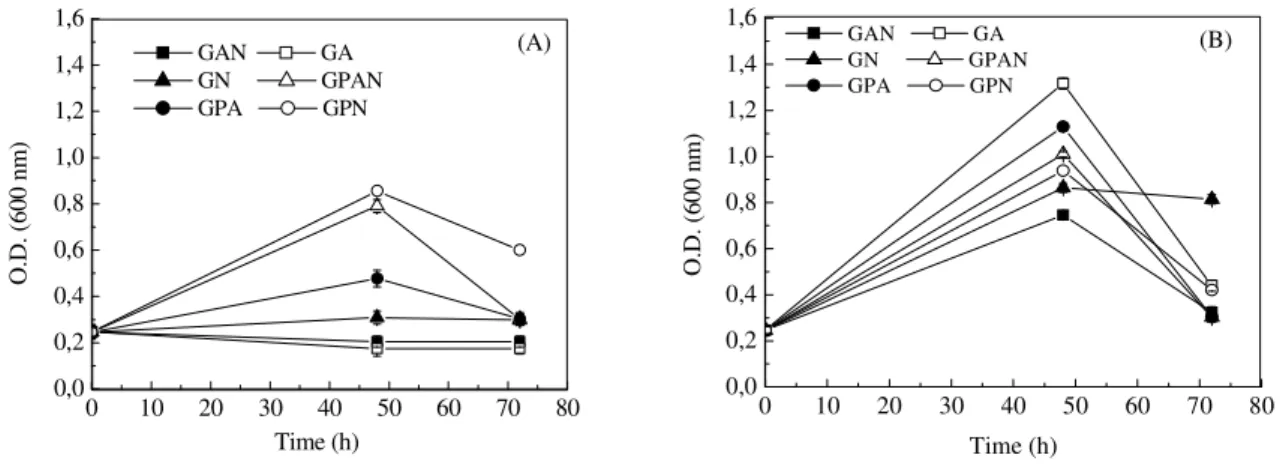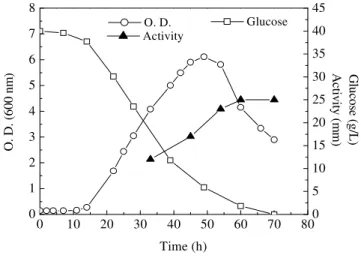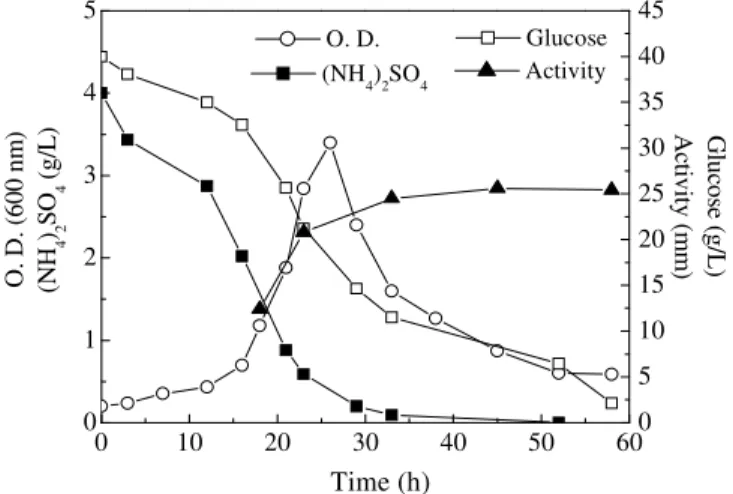Growth, Sporulation and Production of Bioactive Compounds by Bacillus subtilis R14
Texto
Imagem




Documentos relacionados
In order to obtain chemical building blocks, basically two essential biomass processes need to be developed: a) hydrolysis of polysaccharides originated from
Abstract – The objective of this work was to evaluate the commercial formulations of Bacillus subtilis QST-713 and Bacillus pumilus QST-2808 on mycelial growth inhibition of
The results indicated that for the cellulases and xylanases production, the use of ammonium sulfate as sole nitrogen source had a positive effect on the activity of the
The biomass yield was best with rice bran based medium with sodium nitrate as the nitrogen source for single cell protein production. Anupama acknowledges UGC-CSIR, New Delhi
The ability of crude oil degradation by the investigated strain was monitored in different media with respect to cellular growth, where M5 containing glucose
Current paper reports the experience with sodium nitrate incorporation in broth and solid culture media to optimize, simultaneously, growth detection and presumptive
O artigo 4º da Lei parece ter se espelhado no artigo 5º da CF/88, é voltado a estabelecer garantias aos migrantes, assegura: direitos e liberdades civis, sociais, culturais
Nesta tese, tratamos da correlação entre dois fenôme- nos variáveis no português brasileiro (PB) em dados de fala da comunidade não urbana da Costa da Lagoa (Florianópo- lis –
